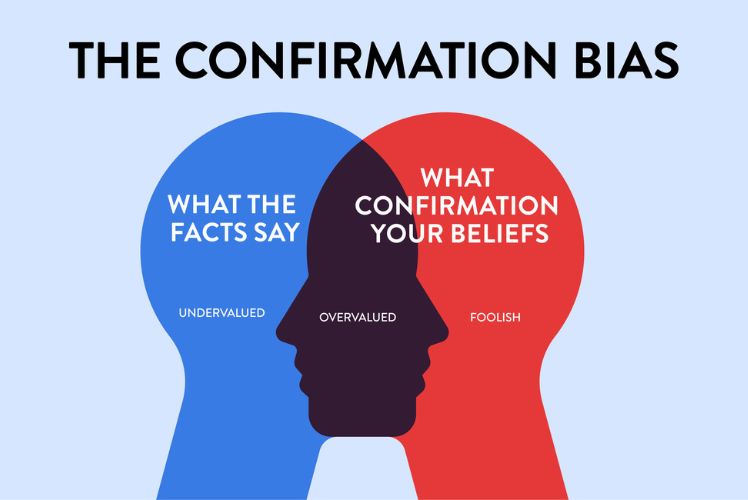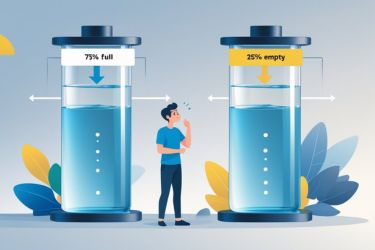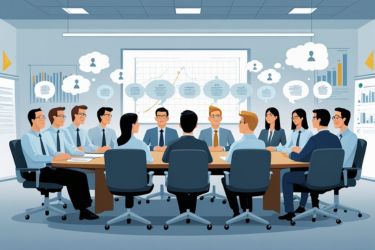Most of us like to believe we’re open-minded, but our brains often have a hidden tendency that affects how we see the world. Confirmation bias is when we look for, notice, or remember information that agrees with what we already believe, while ignoring facts that don’t fit. This common habit shapes our opinions, choices, and even our relationships.

We see confirmation bias everywhere—from the news we watch to the discussions we have with friends and family. If we aren’t careful, it can lead us to make decisions without considering all the facts. By understanding this bias, we can learn to recognise it in ourselves and start making more balanced choices.
Key Takeaways
- Confirmation bias makes us pay more attention to information that matches our beliefs.
- It can affect our thinking in daily life, especially in the way we process news and information.
- Being aware of confirmation bias helps us make fairer and more informed decisions.
Understanding Confirmation Bias

Confirmation bias shapes how we think and make decisions in many areas, including work, school, and our personal lives. Understanding its definition, history, and different forms helps us see why it is so common in human psychology.
Definition and Key Characteristics
Confirmation bias is a mental shortcut where we look for, notice, and remember information that matches our existing beliefs. We may ignore or undervalue facts that go against what we already think is true.
In psychology, this type of bias often keeps us locked into our opinions, even when there is strong evidence to the contrary. For example, if we believe a particular diet is best, we might only read articles confirming our viewpoint, overlooking scientific studies that suggest otherwise.
Key characteristics of confirmation bias:
- Favouring information that fits our beliefs
- Ignoring or dismissing conflicting evidence
- Interpreting neutral facts in a way that supports our views
This bias can affect our judgement in situations ranging from evaluating job candidates to discussing news events or making everyday choices.
History and Origins
The concept of confirmation bias was introduced in the 1960s by British psychologist Peter Wason. He showed that people tend to seek information that supports their assumptions rather than questions them. His research suggested our thinking is influenced by cognitive shortcuts, or heuristics, which make mental work easier but not always accurate.
Since then, many psychology studies have shown that confirmation bias is a natural part of how our brains process information. It developed as a way to help us make quick decisions. However, nowadays, this mental shortcut can create problems, especially when decisions need careful thought.
Research into confirmation bias has led us to understand not just individual behaviour, but also how groups can reinforce and spread shared beliefs, even if those beliefs are untrue.
Types of Confirmation Bias
There are several types of confirmation bias that affect the way we process information:
-
Biased search for information:
We actively seek out details that support what we already believe. For example, when researching a topic online, we might click only on links that back up our opinions. -
Biased interpretation:
When exposed to the same facts as others, we may interpret them differently, seeing them as proof for our own beliefs. -
Biased memory (selective recall):
We are more likely to remember events or information that support our beliefs and forget things that do not.
Understanding these types helps us recognise confirmation bias in ourselves and others, allowing us to make more informed choices. This bias is not limited to any one area of life but can appear anytime we process information.
Psychological Basis of Confirmation Bias

Confirmation bias is rooted in how our brains process information, how we make quick decisions, and the emotions that colour our thinking. Understanding these parts can help us see why this bias is so common and hard to avoid.
Cognitive Processes
Our minds often look for patterns and connections to make sense of the world. We collect information, judge its meaning, and remember facts—these are all basic cognitive processes.
When we already hold an opinion, our perception tends to select facts that fit with what we believe. We may skim over evidence that goes against our view or even forget it. This can happen when we read the news, discuss politics, or judge others’ behaviour.
A simple example:
- We may focus on test results that prove we are good at a subject and downplay the times we did poorly.
This way of thinking saves effort but can lead to mistakes in judgement.
Unconscious Bias and Heuristics
Confirmation bias often works outside our awareness. Without realising, we use mental shortcuts called heuristics to make decisions quickly.
Heuristics help us sort information fast, but they can let unconscious bias in. These biases shape how we notice, remember, or interpret facts.
Common heuristics influencing confirmation bias include:
- Availability heuristic: Relying on examples that easily come to mind
- Anchoring: Sticking too closely to initial information
These shortcuts keep us from feeling overwhelmed, but they reinforce our existing beliefs, even when new evidence disagrees.
Emotional Influences
Emotions play an important role in confirmation bias. Our beliefs are often tied to strong feelings about identity, comfort, or fear.
When we see information that supports what we care about, it feels good. If we come across something that challenges us, it can cause discomfort or even anxiety. As a result, we are more likely to accept information that matches our feelings.
For instance, if our friends or family believe something, we are more likely to agree because it feels safe and helps us fit in. This emotional pull makes it harder to look at opposing viewpoints fairly.
Confirmation Bias in Everyday Life

We often face situations where our beliefs shape what we notice, who we trust, and how we interact with others. This thinking pattern can influence our decisions, relationships, and even how we view groups of people.
Decision-Making and Judgement
In our daily choices, confirmation bias can guide us to seek out information that supports our pre-existing views, while ignoring data that challenges them.
For example, when we read the news, we may prefer stories or sources that match our opinions. This can limit our understanding and make our decisions less balanced.
When making purchases, we are likely to notice only the positive reviews that confirm we are right about a product, ignoring warnings or low ratings. This pattern also affects bigger choices—like who we vote for, which medical advice we trust, or what investments we make.
Common signs of confirmation bias in decision-making:
- Selectively searching for supporting evidence
- Dismissing or devaluing opposing evidence
- Over-confidence in our conclusions
These habits can lead to errors in judgement and missed opportunities to learn.
Personal Relationships
In our relationships with family, friends, and colleagues, confirmation bias often appears when we notice behaviours that fit our existing beliefs and overlook those that do not.
For instance, if we believe someone is unreliable, we are more likely to remember times they are late, but forget when they are on time. This can make misunderstandings and conflicts last longer.
We might also judge new people based on rumours or first impressions, looking for actions that confirm what we already think about them.
This bias sometimes causes us to ignore evidence that someone has changed or shown different qualities, which can block trust and healthy communication.
Stereotypes and Social Interactions
Our ideas about groups—such as professions, cultures, or age groups—can be strongly shaped by confirmation bias.
Once we believe a stereotype, we notice and remember only the actions that fit that picture, ignoring examples that challenge it. For example, if we think teenagers are careless, we may focus on times when they act irresponsibly and miss times when they are careful or responsible.
This can reinforce unfair treatment and deepen divides between groups. It may also affect how we interact with others, leading us to expect certain behaviours and react accordingly.
Recognising confirmation bias is important if we want to treat people more fairly and challenge false stereotypes.
Media, News, and Information Processing

Confirmation bias shapes how we understand news stories and process information. Our views about issues, trust in sources, and choices about what we read or watch can all be influenced by this bias.
Interpretation of News Stories
When we encounter news stories, our existing beliefs affect how we interpret the information. We tend to focus on details that fit our point of view and ignore details that challenge it. For instance, if we have strong opinions about a political issue, we may notice facts that support our position and dismiss those that contradict it.
Journalists and editors are also affected by confirmation bias. The process of deciding which stories to cover and what questions to ask can be influenced by their own beliefs. This can impact which stories are published and which angles are explored.
Key influences on news interpretation:
- Personal experiences
- Values and beliefs
- Trust or distrust in the media source
These factors lead us to process information in a way that often confirms what we already think.
Point of View and Selective Exposure
Our point of view makes us likely to seek out news sources that agree with our beliefs. This is called selective exposure. We might visit websites, read articles, or follow social media accounts that support our own perspective. As a result, we can become less open to new ideas or critical information.
Common sources of selective exposure include:
- Social media feeds
- Preferred news outlets
- Online communities
This behaviour creates personal "media diets" that reinforce our opinions and limit exposure to diverse views. Over time, these patterns can lead to audience fragmentation, where we engage mainly with people who share our beliefs, deepening divisions in society.
Spread of Misinformation
Confirmation bias plays a large role in the spread of misinformation. When news stories match our views, we are more likely to believe and share them without checking if they are true. This can cause false information to spread quickly, especially on platforms where news moves fast.
Social media algorithms often push content that matches our interests and beliefs. This means we may see more misleading stories that fit our point of view. As we continue to interact with this type of content, it becomes harder to recognise misinformation.
To limit the spread of false news, we should:
- Be aware of our own biases
- Check sources before sharing stories
- Seek out information from various points of view
These actions help us process information more carefully and reduce the impact of confirmation bias in our daily news consumption.
Consequences and Impacts
Confirmation bias shapes our actions, beliefs, and the decisions we make. It can create problems both in private life and across whole communities, making it important for us to understand where it occurs and what we can do about it.
Implications for Society
When many people hold similar biases, it becomes harder for society to solve problems fairly. Confirmation bias can lead to polarisation, where groups become more divided because each side only listens to information that supports their own views. This can make conversations about politics, science, or culture less productive.
Media and social networks often reinforce these biases by showing us content that matches what we already believe. As a result, false or misleading information can spread farther and faster. This puts trust in experts and institutions at risk and may even harm our ability to make progress on important public issues.
Decision Making Errors
In decision making, confirmation bias can cause us to ignore useful evidence that goes against our opinions. This may lead to flawed reasoning or poor choices, both in personal life and in workplaces. For example, managers may only focus on data that supports their strategy and overlook warning signs or risks.
Problems in scientific research also arise when researchers interpret results based on what they expect or hope to find. This can lead to mistakes in experiments, unreliable findings, or failed projects.
To help avoid these errors, we must be open to new evidence, especially if it challenges what we think we know. Admitting when we are wrong is a sign of good judgement, not weakness.
Overcoming Confirmation Bias
There are actions we can take to minimise the impact of confirmation bias in our lives. Critical thinking helps us question assumptions and ask for proof before forming an opinion. Practising this skill makes our decision making more accurate.
We can try these steps:
- Seek out different viewpoints, not just the ones we agree with
- Talk to people with other opinions and listen to their reasons
- Check facts from multiple reliable sources
- Reflect on whether our own beliefs stand up to new information
By making these habits part of our routine, we improve our decisions and protect ourselves from the negative effects of bias.
Frequently Asked Questions
Understanding confirmation bias helps us see how our beliefs affect our decisions, thinking, and research findings. By learning how it operates and how we can counteract it, we become better at making fair, informed choices.
What are some classic instances of confirmation bias in decision-making?
We often see confirmation bias when people form opinions about political candidates and then seek out only the news that supports their choice.
Managers may focus on evidence that fits their view of a particular employee while ignoring signs that contradict their opinion. This can affect performance reviews and promotions.
In what ways does confirmation bias impact psychological studies?
In psychological research, confirmation bias can lead us to favour data that supports our hypothesis and ignore conflicting results.
This can unintentionally skew research findings and reduce the reliability of scientific conclusions.
How can individuals recognise and mitigate confirmation bias in their thinking?
We can spot confirmation bias by noticing when we ignore evidence that challenges our views or only look for information that agrees with us.
To reduce its impact, we should ask ourselves if we are considering all the facts, seek out opposing viewpoints, and reflect on the reasons for our beliefs.
Could you provide examples of confirmation bias affecting everyday life choices?
When we believe that a food is unhealthy, we might notice only stories about its risks and overlook studies that show benefits.
If we think someone is unfriendly, we may only remember the times they acted distant, forgetting moments when they were kind. This can impact our relationships and daily decisions.
What methods are employed in research to minimise the effects of confirmation bias?
Researchers use double-blind procedures, peer review, and replication of studies to reduce confirmation bias.
They also pre-register their hypotheses and use statistical methods to guard against biased interpretation of results.
Can you explain how confirmation bias is represented within cognitive psychology theories?
In cognitive psychology, confirmation bias is seen as a common mental shortcut we use to make sense of information quickly.
Theories suggest our brains naturally prefer information that fits what we already know, as this takes less mental effort. This tendency, while useful in some situations, can lead to mistakes in reasoning.

















